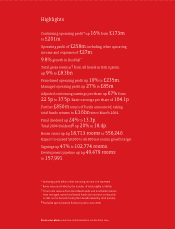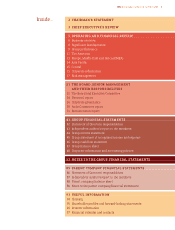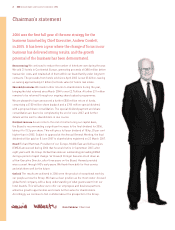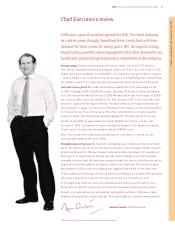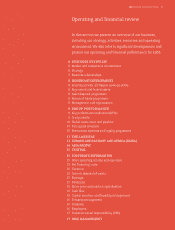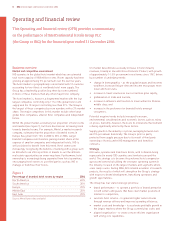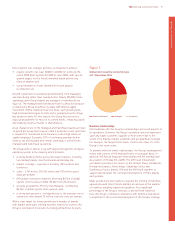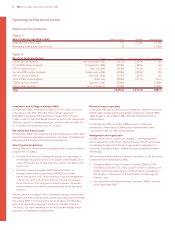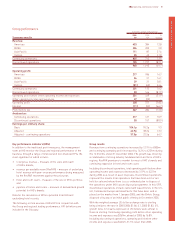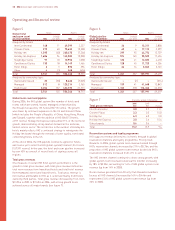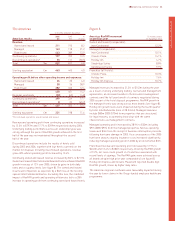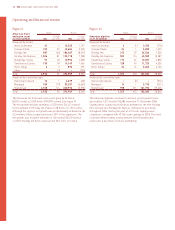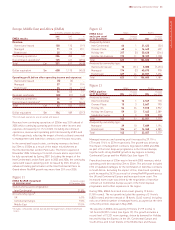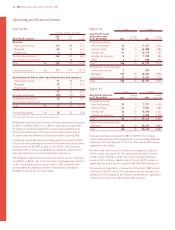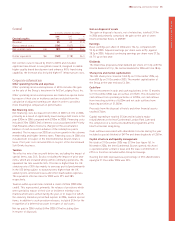Holiday Inn 2006 Annual Report Download - page 8
Download and view the complete annual report
Please find page 8 of the 2006 Holiday Inn annual report below. You can navigate through the pages in the report by either clicking on the pages listed below, or by using the keyword search tool below to find specific information within the annual report.
Operating and financial review
Business overview
Market and competitive environment
IHG operates in the global hotel market which has an estimated
total room capacity of 18.8 million rooms. Room capacity has been
growing at approximately 3% per annum over the last five years.
The hotel market is geographically concentrated with 12 countries
accounting for two-thirds of worldwide hotel room supply. The
Group has a leadership position (top three by room numbers)
in more of these markets than any other major hotel company.
The hotel market is, however, a fragmented market with the four
largest companies controlling only 11% of the global hotel room
supply and the 10 largest controlling less than 21%. The Group is
the largest of these companies by room numbers with a 3% market
share. The major competitors in this market include other large
global hotel companies, smaller hotel companies and independent
hotels.
Within the global market, a relatively low proportion of hotel rooms
are branded (see figure 1), but there has been an increasing trend
towards branded rooms. For example, Mintel, a market research
company, estimates that the proportion of branded rooms in
Europe has grown from 15% in 2000 to 25% in 2004. Larger
branded companies are therefore gaining market share at the
expense of smaller companies and independent hotels. IHG is
well positioned to benefit from this trend. Hotel owners are
increasingly recognising the benefits of working with a group such
as IHG which can offer a portfolio of brands to suit the different
real estate opportunities an owner may have. Furthermore, hotel
ownership is increasingly being separated from hotel operations,
encouraging hotel owners to use third parties such as IHG to
manage or franchise their hotels.
Figure 1
Percentage of branded hotel rooms by region 2004
North America 65%
South America 20%
Europe 25%
Middle East 25%
East Asia 25%
Source: Mintel (latest data available).
US market data indicates a steady increase in hotel industry
revenues, broadly in line with Gross Domestic Product, with growth
of approximately 1-1.5% per annum in real terms since 1967, driven
by a number of underlying trends:
• change in demographics – as the population ages and becomes
wealthier, increased leisure time and income encourages more
travel and hotel visits;
• increase in travel volumes as low cost airlines grow rapidly;
• globalisation of trade and tourism;
• increase in affluence and freedom to travel within the Chinese
middle class; and
• increase in the preference for branded hotels amongst
consumers.
Potential negative trends include increased terrorism,
environmental considerations and economic factors such as rising
oil prices. Currently, however, there are no indications that demand
is being significantly affected by these factors.
Supply growth in the industry is cyclical, averaging between zero
and 5% per annum historically. The Group’s profit is partly
protected from supply pressure due to its model of third party
ownership of hotels under IHG management and franchise
contracts.
Strategy
IHG owns, operates and franchises hotels, with its brands being
represented in nearly 100 countries and territories around the
world. The strategy is to become the preferred hotel company for
guests and owners by building the strongest operating system in
the industry, focused on the largest markets and segments where
scale really counts. During 2006, IHG initiated a number of research
projects, the results of which will strengthen the Group’s strategy
with respect to brand development, franchising operations and
growth opportunities.
The Group has four stated strategic priorities:
• brand performance – to operate a portfolio of brands attractive
to both owners and guests that have clear market positions in
relation to competitors;
• excellent hotel returns – to generate higher owner returns
through revenue delivery and improved operating efficiency;
• market scale and knowledge – to accelerate profitable growth in
the largest markets where the Group currently has scale; and
• aligned organisation – to create a more efficient organisation
with strong core capabilities.
6 IHG Annual report and financial statements 2006
This Operating and financial review (OFR) provides a commentary
on the performance of InterContinental Hotels Group PLC
(the Group or IHG) for the financial year ended 31 December 2006.


